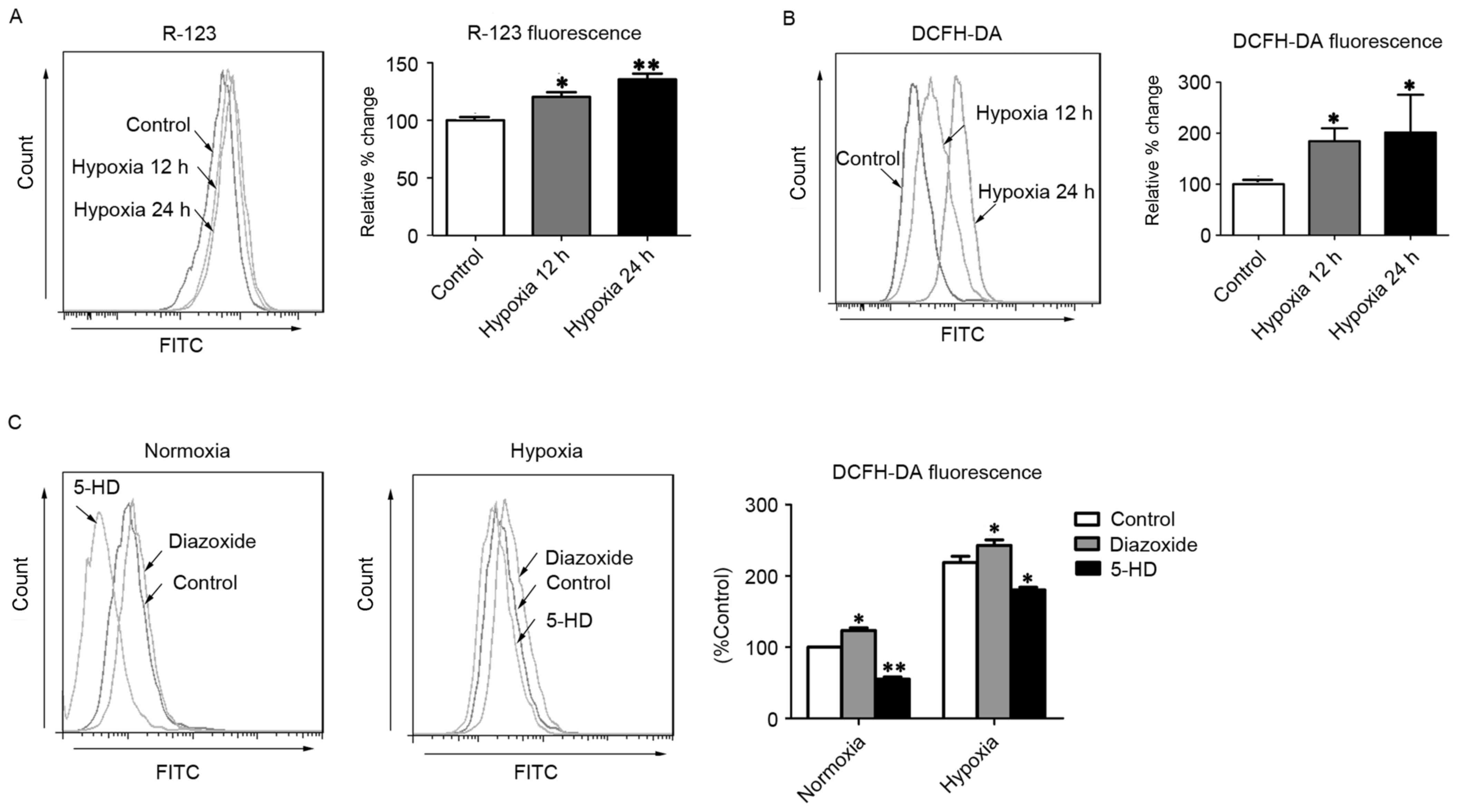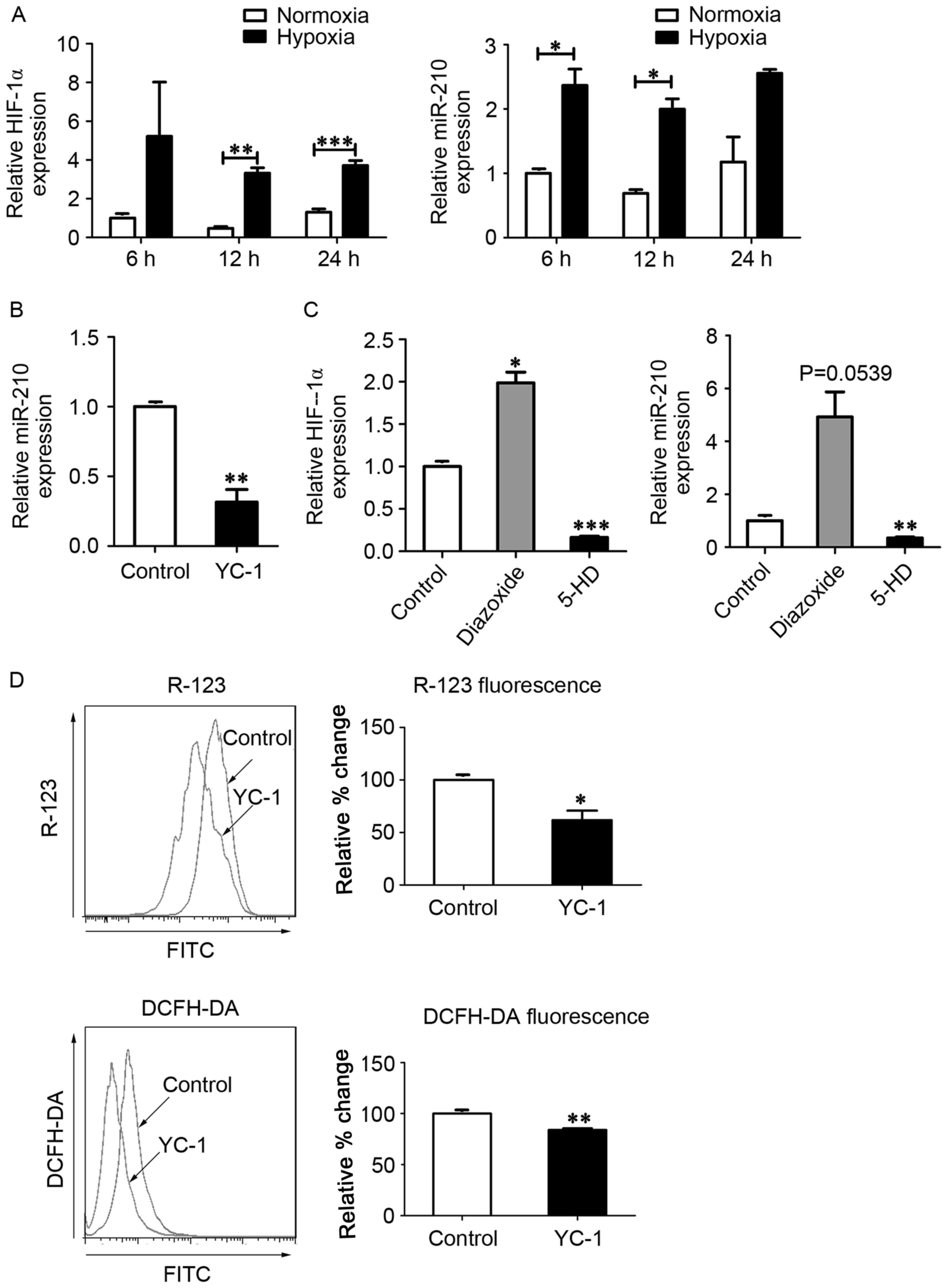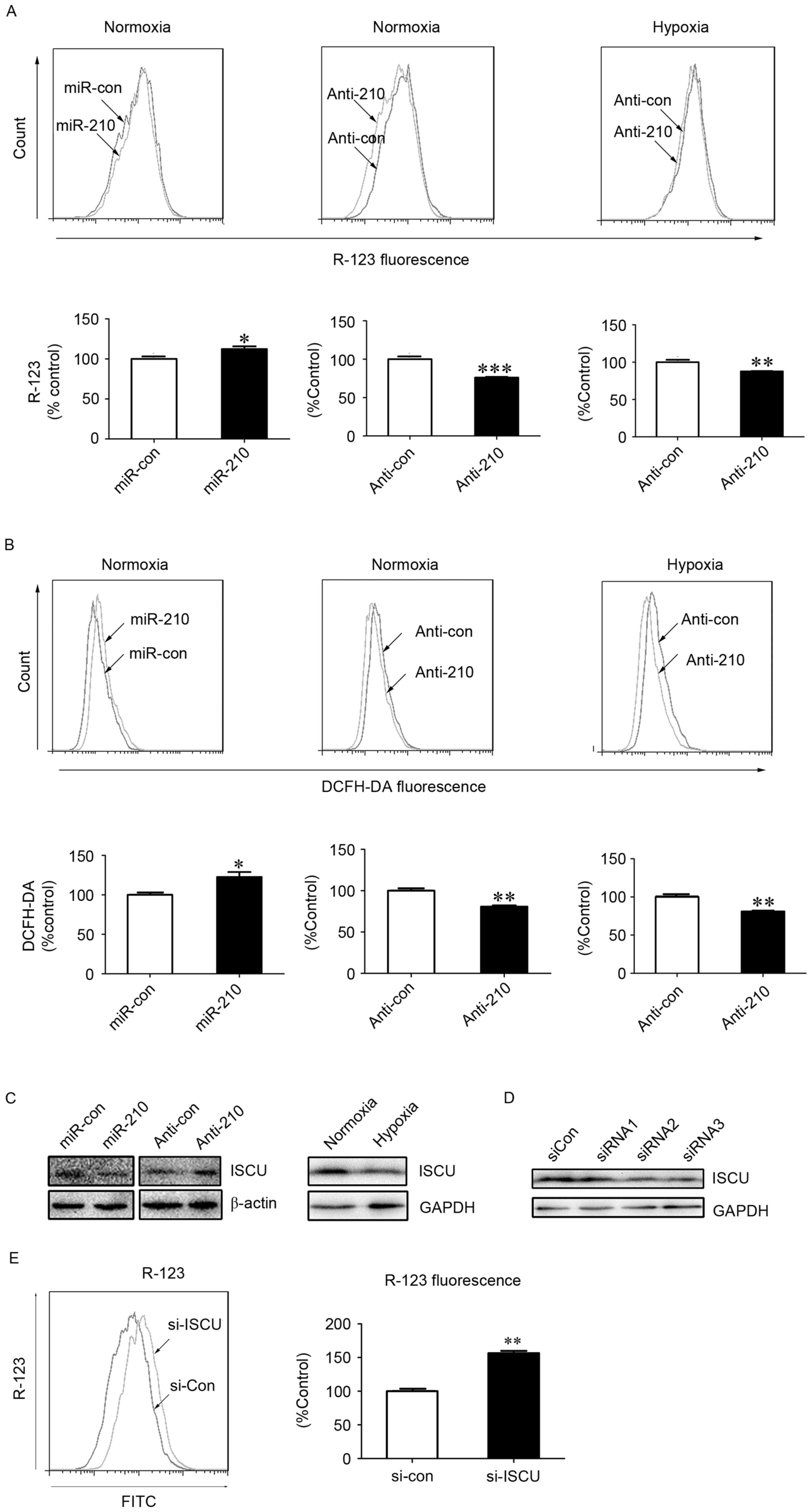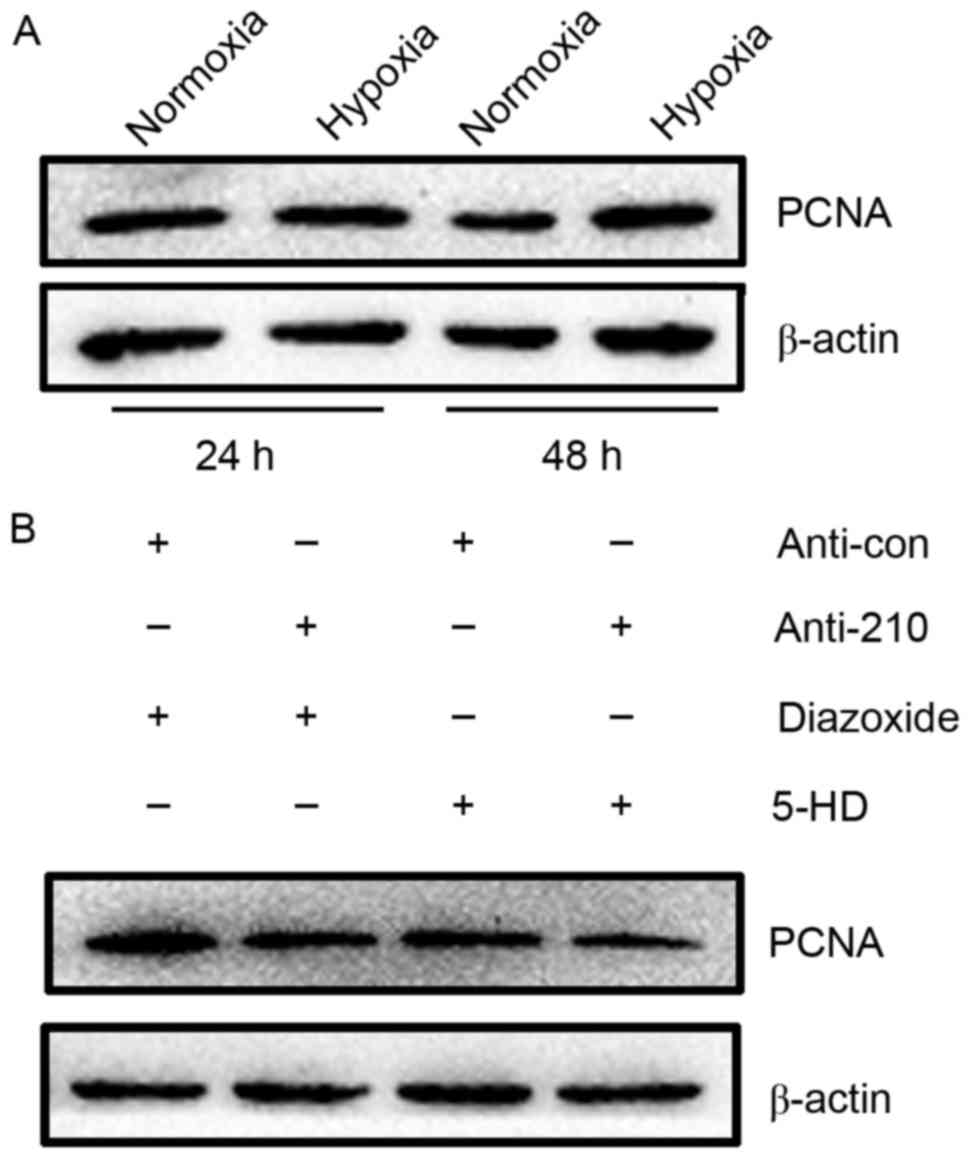|
1
|
Blok IM, van Riel ACMJ, van Dijk APJ,
Mulder BJM and Bouma BJ: From bosentan to macitentan for pulmonary
arterial hypertension and adult congenital heart disease: Further
improvement? Int J Cardiol. 227:51–52. 2017. View Article : Google Scholar : PubMed/NCBI
|
|
2
|
Ryan JJ and Archer SL: Emerging concepts
in the molecular basis of pulmonary arterial hypertension (PAH):
Part I: Metabolic plasticity and mitochondrial dynamics in the
pulmonary circulation and right ventricle in pulmonary arterial
hypertension. Circulation. 131:1691–1702. 2015. View Article : Google Scholar : PubMed/NCBI
|
|
3
|
Frumkin LR: The pharmacological treatment
of pulmonary arterial hypertension. Pharmacol Rev. 64:583–620.
2012. View Article : Google Scholar : PubMed/NCBI
|
|
4
|
Ibe JC, Zhou Q, Chen T, Tang H, Yuan JX,
Raj JU and Zhou G: Adenosine monophosphate-activated protein kinase
is required for pulmonary artery smooth muscle cell survival and
the development of hypoxic pulmonary hypertension. Am J Respir Cell
Mol Biol. 49:609–618. 2013. View Article : Google Scholar : PubMed/NCBI
|
|
5
|
Vanden Hoek TL, Becker LB, Shao Z, Li C
and Schumacker PT: Reactive oxygen species released from
mitochondria during brief hypoxia induce preconditioning in
cardiomyocytes. J Biol Chem. 273:18092–18098. 1998. View Article : Google Scholar : PubMed/NCBI
|
|
6
|
Pain T, Yang XM, Critz SD, Yue Y, Nakano
A, Liu GS, Heusch G, Cohen MV and Downey JM: Opening of
mitochondrial K(ATP) channels triggers the preconditioned state by
generating free radicals. Circ Res. 87:460–466. 2000. View Article : Google Scholar : PubMed/NCBI
|
|
7
|
Han J, Kim N, Park J, Seog DH, Joo H and
Kim E: Opening of mitochondrial ATP-sensitive potassium channels
evokes oxygen radical generation in rabbit heart slices. J Biochem.
131:721–727. 2002. View Article : Google Scholar : PubMed/NCBI
|
|
8
|
Teramoto N: Physiological roles of
ATP-sensitive K+ channels in smooth muscle. J Physiol. 572:617–624.
2006. View Article : Google Scholar : PubMed/NCBI
|
|
9
|
Samavati L, Monick MM, Sanlioglu S,
Buettner GR, Oberley LW and Hunninghake GW: Mitochondrial K(ATP)
channel openers activate the ERK kinase by an oxidant-dependent
mechanism. Am J Physiol Cell Physiol. 283:C273–C281. 2002.
View Article : Google Scholar : PubMed/NCBI
|
|
10
|
Zhao JP, Guo Z, Zhou ZG, Chen J, Hu HL,
Wang T and Zhang ZX: Effect of opening of mitochondrial
ATP-sensitive K(+) channels on the expression of hypoxia inducible
factor-1alpha and cell proliferation in pulmonary arterial smooth
muscle cells of rats. Sheng Li Xue Bao. 59:157–162. 2007.(In
Chinese). PubMed/NCBI
|
|
11
|
Hu HL, Zhang ZX, Chen CS, Cai C, Zhao JP
and Wang X: Effects of mitochondrial potassium channel and membrane
potential on hypoxic human pulmonary artery smooth muscle cells. Am
J Respir Cell Mol Biol. 42:661–666. 2010. View Article : Google Scholar : PubMed/NCBI
|
|
12
|
Wang Y, Liu Y, Chen J, Tang MJ, Zhang SL,
Wei LN, Li CH and Wei DB: Restriction-ligation-free (RLF) cloning:
A high-throughput cloning method by in vivo homologous
recombination of two PCR products. Genet Mol Res. 14:12306–12315.
2015. View Article : Google Scholar : PubMed/NCBI
|
|
13
|
Jin Z, Sun T, Xia X, Wei Q, Song Y, Han Q,
Chen Q, Hu J and Zhang J: Optimized expression, purification of
herpes B virus gD protein in Escherichia coli, and production of
its monoclonal antibodies. Jundishapur J Microbiol. 9:e321832016.
View Article : Google Scholar : PubMed/NCBI
|
|
14
|
Livak KJ and Schmittgen TD: Analysis of
relative gene expression data using real-time quantitative PCR and
the 2(-Delta Delta C(T)) method. Methods. 25:402–408. 2001.
View Article : Google Scholar : PubMed/NCBI
|
|
15
|
Lu YY, Chen TS, Qu JL, Pan WL, Sun L and
Wei XB: Dihydroartemisinin (DHA) induces caspase-3-dependent
apoptosis in human lung adenocarcinoma ASTC-a-1 cells. J Biomed
Sci. 16:162009. View Article : Google Scholar : PubMed/NCBI
|
|
16
|
Zhang J, Jin Z, Sun T, Jiang Y, Han Q,
Song Y, Chen Q and Xia X: Prokaryotic expression, purification and
polyclonal antibody production of a truncated recombinant rabies
virus L protein. Iranian J Biotechnol. 13:18–24. 2015. View Article : Google Scholar
|
|
17
|
Suski JM, Lebiedzinska M, Bonora M, Pinton
P, Duszynski J and Wieckowski MR: Relation between mitochondrial
membrane potential and ROS formation. Methods Mol Biol.
810:183–205. 2012. View Article : Google Scholar : PubMed/NCBI
|
|
18
|
Wang Y and Wei L, Wei D, Li X, Xu L and
Wei L: Testis-specific lactate dehydrogenase (LDH-C4) in skeletal
muscle enhances a pika's sprint-running capacity in hypoxic
environment. Int J Environ Res Public Health. 12:9218–9236. 2015.
View Article : Google Scholar : PubMed/NCBI
|
|
19
|
Favaro E, Ramachandran A, McCormick R, Gee
H, Blancher C, Crosby M, Devlin C, Blick C, Buffa F, Li JL, et al:
MicroRNA-210 regulates mitochondrial free radical response to
hypoxia and krebs cycle in cancer cells by targeting iron sulfur
cluster protein ISCU. PLoS One. 5:e103452010. View Article : Google Scholar : PubMed/NCBI
|
|
20
|
Lee DC, Romero R, Kim JS, Tarca AL,
Montenegro D, Pineles BL, Kim E, Lee J, Kim SY, Draghici S, et al:
miR-210 targets iron-sulfur cluster scaffold homologue in human
trophoblast cell lines: Siderosis of interstitial trophoblasts as a
novel pathology of preterm preeclampsia and
small-for-gestational-age pregnancies. Am J Pathol. 179:590–602.
2011. View Article : Google Scholar : PubMed/NCBI
|
|
21
|
Rouault TA and Tong WH: Iron-sulfur
cluster biogenesis and human disease. Trends Genet. 24:398–407.
2008. View Article : Google Scholar : PubMed/NCBI
|
|
22
|
Zhang H, Sun K, Ding J, Xu H, Zhu L, Zhang
K, Li X and Sun W: Harmine induces apoptosis and inhibits tumor
cell proliferation, migration and invasion through down-regulation
of cyclooxygenase-2 expression in gastric cancer. Phytomedicine.
21:348–355. 2014. View Article : Google Scholar : PubMed/NCBI
|
|
23
|
Noma A: ATP-regulated K+ channels in
cardiac muscle. Nature. 305:147–148. 1983. View Article : Google Scholar : PubMed/NCBI
|
|
24
|
Costa AD, Quinlan CL, Andrukhiv A, West
IC, Jabůrek M and Garlid KD: The direct physiological effects of
mitoK(ATP) opening on heart mitochondria. Am J Physiol Heart Circ
Physiol. 290:H406–H415. 2006. View Article : Google Scholar : PubMed/NCBI
|
|
25
|
Nilakantan V, Liang H, Mortensen J, Taylor
E and Johnson CP: Variable effects of the mitoK(ATP) channel
modulators diazoxide and 5-HD in ATP-depleted renal epithelial
cells. Mol Cell Biochem. 335:211–222. 2010. View Article : Google Scholar : PubMed/NCBI
|
|
26
|
Teshima Y, Akao M, Li RA, Chong TH,
Baumgartner WA, Johnston MV and Marbán E: Mitochondrial
ATP-sensitive potassium channel activation protects cerebellar
granule neurons from apoptosis induced by oxidative stress. Stroke.
34:1796–1802. 2003. View Article : Google Scholar : PubMed/NCBI
|
|
27
|
Cao C, Healey S, Amaral A, Lee-Couture A,
Wan S, Kouttab N, Chu W and Wan Y: ATP-sensitive potassium channel:
A novel target for protection against UV-induced human skin cell
damage. J Cell Physiol. 212:252–263. 2007. View Article : Google Scholar : PubMed/NCBI
|
|
28
|
Malinska D, Mirandola SR and Kunz WS:
Mitochondrial potassium channels and reactive oxygen species. FEBS
Lett. 584:2043–2048. 2010. View Article : Google Scholar : PubMed/NCBI
|
|
29
|
Brunelle JK, Bell EL, Quesada NM,
Vercauteren K, Tiranti V, Zeviani M, Scarpulla RC and Chandel NS:
Oxygen sensing requires mitochondrial ROS but not oxidative
phosphorylation. Cell Metab. 1:409–414. 2005. View Article : Google Scholar : PubMed/NCBI
|
|
30
|
Guzy RD, Hoyos B, Robin E, Chen H, Liu L,
Mansfield KD, Simon MC, Hammerling U and Schumacker PT:
Mitochondrial complex III is required for hypoxia-induced ROS
production and cellular oxygen sensing. Cell Metab. 1:401–408.
2005. View Article : Google Scholar : PubMed/NCBI
|
|
31
|
Simon MC: Mitochondrial reactive oxygen
species are required for hypoxic HIF alpha stabilization. Adv Exp
Med Biol. 588:165–170. 2006. View Article : Google Scholar : PubMed/NCBI
|
|
32
|
Semenza GL: Hydroxylation of HIF-1: Oxygen
sensing at the molecular level. Physiology (Bethesda). 19:176–182.
2004. View Article : Google Scholar : PubMed/NCBI
|
|
33
|
Majmundar AJ, Wong WJ and Simon MC:
Hypoxia-inducible factors and the response to hypoxic stress. Mol
Cell. 40:294–309. 2010. View Article : Google Scholar : PubMed/NCBI
|
|
34
|
Chavez A, Miranda LF, Pichiule P and
Chavez JC: Mitochondria and hypoxia-induced gene expression
mediated by hypoxia-inducible factors. Ann N Y Acad Sci.
1147:312–320. 2008. View Article : Google Scholar : PubMed/NCBI
|
|
35
|
Maxwell PH, Wiesener MS, Chang GW,
Clifford SC, Vaux EC, Cockman ME, Wykoff CC, Pugh CW, Maher ER and
Ratcliffe PJ: The tumour suppressor protein VHL targets
hypoxia-inducible factors for oxygen-dependent proteolysis. Nature.
399:271–275. 1999. View
Article : Google Scholar : PubMed/NCBI
|
|
36
|
Chan SY, Zhang YY, Hemann C, Mahoney CE,
Zweier JL and Loscalzo J: MicroRNA-210 controls mitochondrial
metabolism during hypoxia by repressing the iron-sulfur cluster
assembly proteins ISCU1/2. Cell Metab. 10:273–284. 2009. View Article : Google Scholar : PubMed/NCBI
|
|
37
|
Huang X, Le QT and Giaccia AJ:
MiR-210-micromanager of the hypoxia pathway. Trends Mol Med.
16:230–237. 2010. View Article : Google Scholar : PubMed/NCBI
|
|
38
|
Chen Z, Li Y, Zhang H, Huang P and Luthra
R: Hypoxia-regulated microRNA-210 modulates mitochondrial function
and decreases ISCU and COX10 expression. Oncogene. 29:4362–4368.
2010. View Article : Google Scholar : PubMed/NCBI
|













